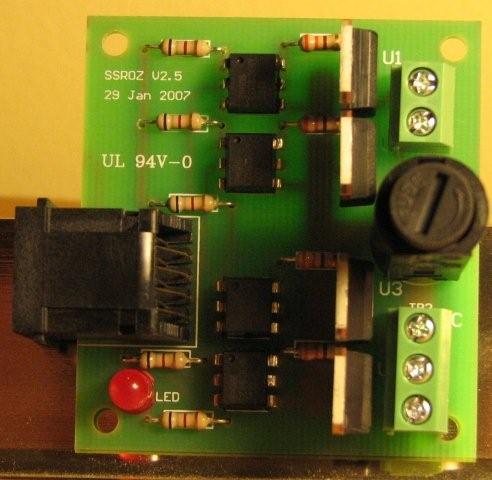Wireless Technologies: Difference between revisions
Ukewarrior (talk | contribs) |
Ukewarrior (talk | contribs) |
||
| Line 5: | Line 5: | ||
One great feature of this technology is that it is very inexpensive. | One great feature of this technology is that it is very inexpensive. | ||
The first widely adopted technology is based on a chip know as the ESP8266. | The first widely adopted technology is based on a chip know as the ESP8266. | ||
Here is | Here is a link to wiki entry for this little beauty if you care to read up on it: [https://en.wikipedia.org/wiki/ESP8266 ESP8266 wiki entry] | ||
Revision as of 13:42, 4 February 2016
Overview
The revolution of iOT (Internet of Things) has been beneficial to the Christmas Lighting community by bringing the ability to incorporate industry standard wifi as a connection method for our lighting controllers. The advantage of wireless is of course the reduction in cables and potentially more flexibility in light element design.
One great feature of this technology is that it is very inexpensive. The first widely adopted technology is based on a chip know as the ESP8266. Here is a link to wiki entry for this little beauty if you care to read up on it: ESP8266 wiki entry
Note: Some controllers have this device integrated with the controller and do not need these external SSRs.
There are two types of SSRs, AC SSRs (the most common) and DC SSRs. As most Xmas lights are AC powered (110VAC or 24 VAC), DIYC members will use a AC Power SSR to switch or dimm the lights.
For specific requirements (Low Voltage LED MR16 spots and halloween devices) a DC SSR is recommended.
Circuit Diagram
A generic SSR circuit diagram is available for download. The SSR depicted in the above schematic is good for controlling resistive loads (lights, resistors). The SSR design for controlling inductive loads (motors, solenoids, etc) is more complicated, and can be found at other sites on the Internet.
Components
There are a few basic components that make up a Solid State Relay.
Triac
A Triac is a semiconductor device which perfoms the actual switching of the High Voltage current. It is usually in a TO-220 package with three pins.
Optocoupler
The Optocoupler is a device that helps to keep high voltages out of the control board and computer. It consists of a small LED that is optically coupled to an sensor circuit. The controller powers the LED, which causes the sensor circuit to send power to the Triac. Because there is no electrical path from the controller to the High Voltage, the risk of damage is significantly reduced.
Fuse
The fuse is another safety device used in many designs to limit the flow of current through the board. It will blow out if an unsafe amount of current passes through it, preventing damage to the board or a fire.
Resistors
Solid State Relays also have resistors to limit the flow of current through certain components. The value of the resistor can be determined based on the instructions at SimpleIO
Wiki Links
4 Channel SSR Parts List Sean Bowf Coop Board
4 Channel SSROZ Assembly Instructions
Designs with detailed information
- John Wilson's DC SSR 4 Channel
- Andrew Williams DCSSR Version 2.4 4-Channel
- Dirknerkle's Low cost ACSSR (DirkCheap)
- Chris and John's SSRez 4 Channel
- Sean Bowf Standard 4-Channel
- Dave & Greg's SSRneon-G2-LED 4-Channel
- Dave's SSRneon-G2 4-Channel
- Robert Stark 4-Channel
- Robert Stark 6-Channel Power Strip
- Robert Stark 12-Channel
- Frank Kostyun 4-Channel
- David Fansler 8-Channel
- Orien Love 4-Channel Enclosure
- Rodney Harris Pod Enclosure
